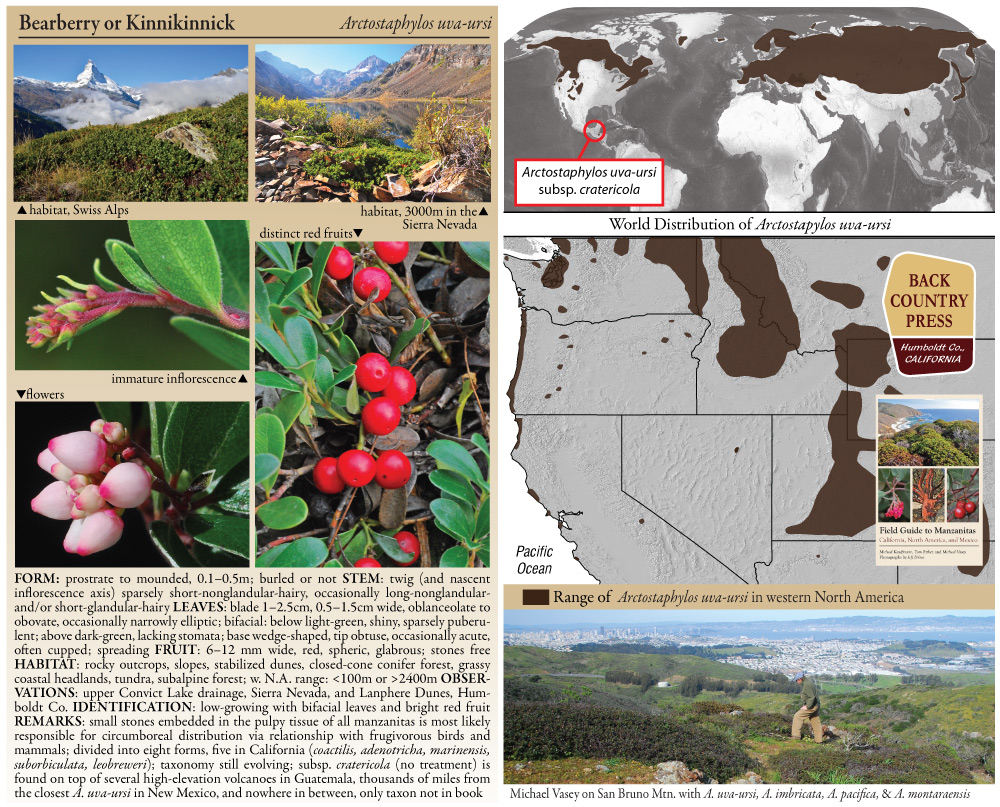(Arctostaphylos uva-ursi subsp. cratericola)
Jeff Bisbee
Arctostaphylos uva-ursi is a variable taxa because of the wide range of latitudes it explores across the northern hemisphere. Guatemala bearberry (Arctostaphylos uva-ursi subsp. cratericola) is a subspecies because of its disjunction distribution in Guatemala. It is also the only taxon not included in Field Guide to Manzanitas. Fernando Tobar recently took a trip to the Sierra Cuchumatanes, in Guatemala and observed these plants in their native habitat. That trip inspired this post.

Guatemala bearberry is most similar to A. uva-ursi f. adenotricha, a form found in the southern Rocky Mountains of Colorado and New Mexico that is glandular. Guatemala bearberry differs from other forms of A. uva-ursi because flower pedicels have fine, glandular hairs. Other forms of uva-ursi have glabrous pedicels or glandular hairs.
Guatemala bearberry is the most geographically isolated manzanita in the world.
– Jeff Bisbee
Arctostaphylos uva-ursi subsp. cratericola. Photos by Fernando Tobar.
Range and habitat
Arctostaphylos uva-ursi subsp. cratericola occurs in three Departments of Guatemala:
- Volcán de Agua, in the Dept. of Sacatepéquez (2500-4000m)
- Volcán Zunil, in the Dept. of Quezaltenango (3100-3800m)
- Sierra de los Cuchumatanes, Dept. Huehuetenango, (3500-3700m on limestone)
It associates with the Guatemalan Tetragona Juniper (Juniperus standleyi). This is a high altitude Juniper related to Juniperus monticola that is found on the high volcanoes of Mexico. Also, Pinus hartwegii, a high altitude pine of Mexico and Guatemala, sometimes known in this region as Pinus donnell-smithii.

When first found in Guatemala, botanists believed it would also be discovered on other high peaks in Mexico. One example is Volcán Tacaná, in Chiapas near the Guatemala border, where many of the same species found in Guatemala also occur. Other examples include the Volcanic Cross Range of Central Mexico. The species’ absence on these peaks is a mystery, especially considering that it must have reached Guatemala by way of Mexico thanks to birds!
Perhaps in the future it will be discovered somewhere in Mexico. Until then, it remains, the most geographically isolated manzanita in the world.







Leave a Reply